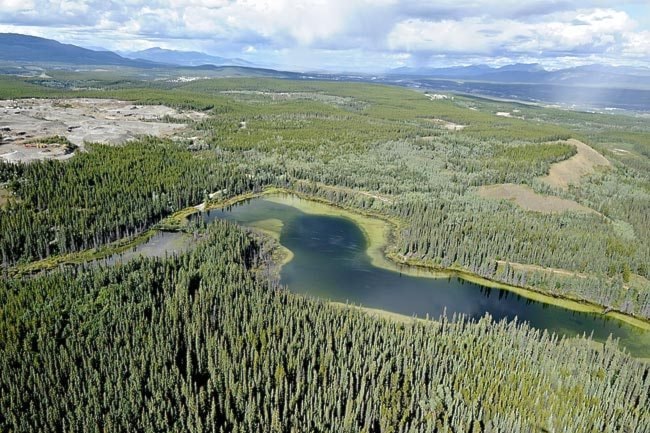There is a gravel shortage in Whitehorse.
Construction companies need gravel to build, and it’s obvious that we are in a construction boom right now, said city planner Kinden Kosick.
That thought could be motivating several quarry developers, who are poised and ready to dig new pits.
To be exact, four new sites - three in Whitehorse and one in Teslin - are in various stages of development.
“Until we get a larger quarry area open, for people to get into, we’re going to keep seeing these smaller, spot applications,” said Kosick. “Stevens is the one. That’s the one we’re kinda putting all our efforts into at the moment.”
But the city doesn’t know how much gravel it can get from Stevens, located along the Alaska Highway between the Takhini Hot Springs Road and city limits.
There have been surface tests done, but the company responsible doesn’t want to give out any numbers, said Kosick.
“They don’t want to give us any kind of definite,” he said. “We don’t have it pinpointed, that’s for sure.”
To get any numbers, city council has been told they have to approve another $110,000.
“It’s kind of a convoluted project that we’re working on right now because we’ve spent money on some consultants and some of them haven’t done anything yet because we’ve gone back to do more testing,” said Kosick.
“So we were able to spend some of our capital money on the original testing and now we’ve had to increase the budget for these other consultants.”
The new budget went before city council on Tuesday.
About $75,000 of the money needed - which will come from the territory - is for a sonic drill that can dig deeper than 30 metres, said Kosick.
The city needs up to 20 years of gravel. It’s believed it is in Stevens, just buried deeper than originally thought.
“We know there’s gravel there, we know there’s lots of gravel there” said Kosick, who wouldn’t even give a ballpark estimate.
But the city isn’t the only one looking to expand the gravel supply.
The Yukon Environmental and Socio-economic Assessment Board just gave the territory nine recommendations to protect water, caribou, wildlife trails, migratory birds and soil erosion around a proposed pit 2.7 kilometres south of McLean Lake Road.
The board approved the project, but it wants Annie Lake Trucking Ltd. to use caution as it clears and extracts an estimated 250,000 cubic metres of gravel from the 32-hectare parcel of land over the next 25 years.
The company predicts it will pull out approximately 10,000 cubic metres every year from May to October, said Jennifer Anthony, the manager of the board’s designated Whitehorse office.
And in the same area, the Kwanlin Dun First Nation has started clearing two gravel pit parcels promised in its final agreement.
While entitled to it, the First Nation is developing the land while leasing it from the territory, like other quarry operators, said acting chief Ray Sydney.
“This is the government’s gravel pit,” he said. “We lease the land from them and then pay them royalties.”
And while there are only six people clearing the trees and roots there now, there will be more employed when they start extracting and crushing the stones, he said.
The estimates from just those two parcels range from 750,000 to 1,250,000 cubic metres of gravel, according to the First Nation’s technical staff.
The last pit currently on the table is located just 13 kilometres north of Teslin.
It will be managed by the territory, but lies on a parcel of land owned by the Northern Pipeline Agency.
“They hold it for TransCanada pipelines,” said Jennifer Clark, the manager of the Yukon Environmental and Socio-economic Board’s designated office in Teslin. “The pipeline right-of-way runs through that site.”
The site is small, expected to produce only about 10,000 cubic metres of gravel over four years, and looks like it could run into many problems.
It is located on a trapline, owned by a Teslin Tlingit Council citizen, said Clark. There are concerns about a nearby residence, access and roads, noise pollution and the effects to the adjacent Ten Mile Creek, said Clark.
Currently, the time the board has to receive public input has been extended at the territory’s request so biologists can survey the area.
That extension is set to end on August 24. If it is not extended again, the board’s decision will be issued two weeks later.
At that time, the Yukon government has the final authority to heed or ignore the independent board’s advice.
Contact Roxanne Stasyszyn at
roxannes@yukon-news.com
